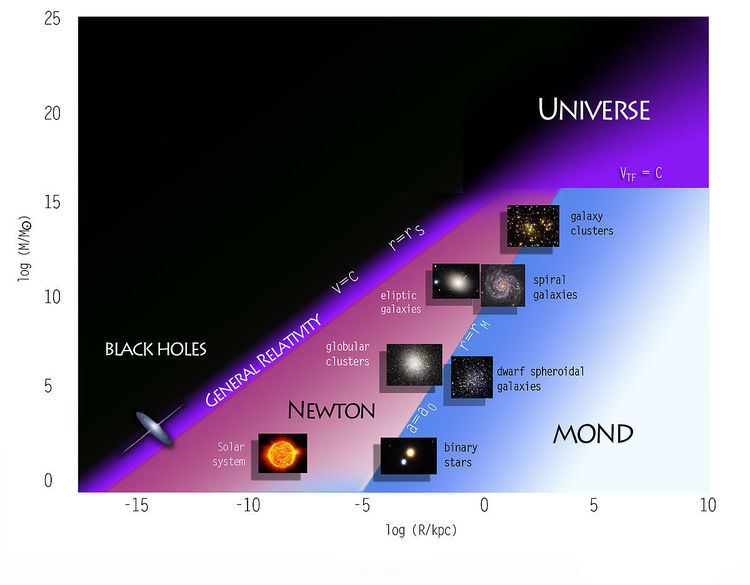 | ||
Extended theories of gravity are alternative theories of gravity developed from the exact starting points investigated first by Einstein and Hilbert. These are theories describing gravity, which are metric theory, "a linear connection" or related affine theories, or metric-affine gravitation theory. Rather than trying to discover correct calculations for the matter side of the Einstein field equations; which include inflation, dark energy, dark matter, large-scale structure, and possibly quantum gravity; it is proposed, instead, to change the gravitational side of the equation.
Contents
Hernández et al.
One such theory is also an extension to general relativity and Newton's Universal gravity law (
There is some evidence that it could also explain the dark energy phenomena and give a nice solution to the initial conditions problem.
These results can be classified as a metric f(R) gravity theory, more properly an f(R,T) theory, derived from an action principle. This approach to solve the dark matter problem takes into account the Tully–Fisher relation as an empirical law that applies always at scales larger than the Milgrom radius.
